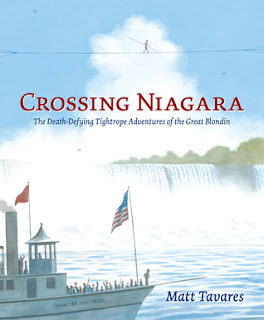I'm pleased to announce that Louise will return to blogging and reviewing for The Nonfiction Detectives in February. At that time I will pass the baton; Louise will run the blog solo in 2017 while I serve on a book award committee until 2018.
2016 Best Nonfiction Books for Children
STEM
by Gail Jarrow
Calkins Creek
by Maria Gianferrari and Bigram Ibatoulline
Roaring Brook Press
by Pamela S. Turner and Andy Comins
Houghton Mifflin Harcourt
by Candace Fleming and Eric Rohmann
Roaring Brook Press
by Sy Montgomery and Keith Ellenbogen
Houghton Mifflin Harcourt
by Nancy F. Castaldo
Houghton Mifflin Harcourt
by Chris Barton and Don Tate
Charlesbridge
History & Biography
by Rich Wallace and Sandra Neil Wallace
Calkins Creek
March Book 3
by John Lewis, Andrew Aydin and Nate Powell
Top Shelf Productions
A Poem for Peter
by Andrea Davis Pinkney, Lou Fancher and Steve Johnson
Viking Books for Young Readers
A Poem for Peter
by Andrea Davis Pinkney, Lou Fancher and Steve Johnson
Viking Books for Young Readers
by Javaka Steptoe
Little, Brown and Company
by Pamela S. Turner and Gareth Hinds
Charlesbridge
by Shana Corey and Red Nose Studio
Schwartz & Wade
Some Writer: The Story of E.B. White
by Melissa Sweet
Houghton Mifflin Harcourt Books for Young Readers
We Will Not Be Silent
by Russell Freedman
Clarion Books
Poetry
by Ashley Bryan
Atheneum Books for Young Readers
by Roxanne Orgill and Francis Vallejo
Candlewick
by Carole Boston Weatherford and Jeffrey Boston Weatherford
Atheneum Books for Young Readers



















































